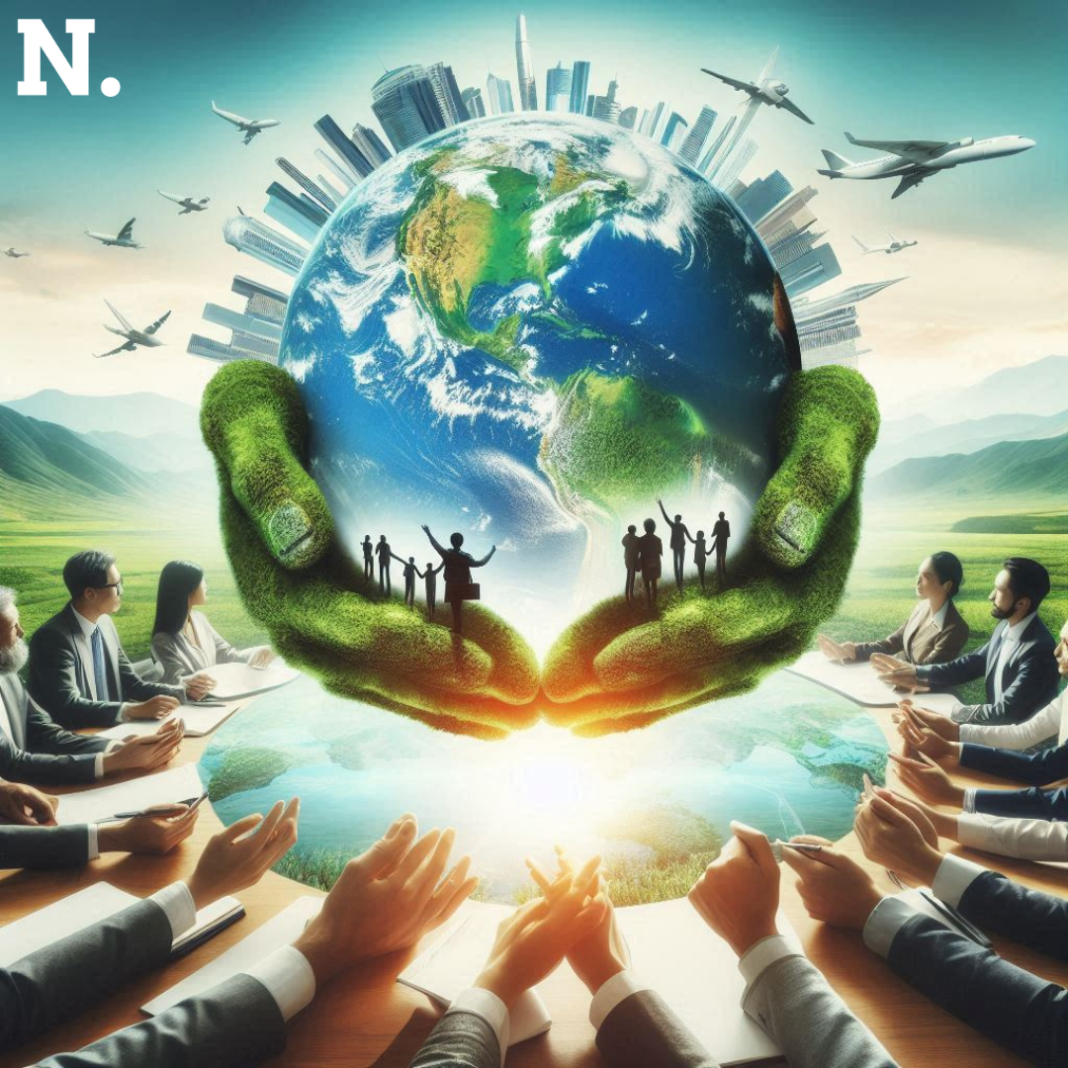On World Environment Day 2024 this year, countries took action together under the theme “Our Land.”Our Future. #GenerationRestoration. Addresses the restoration of degraded lands, combats desertification, and builds resilience to drought. The Kingdom of Saudi Arabia hosted event for the second time in over 50 years in the West Asia region. Being a region with severe droughts, sandstorms, and rising temperatures, Saudi Arabia’s environmental challenges set the stage discourses for the day.
This year’s World Environment Day has seen a record 3,657 events take place globally. Governments, cities, civil society, universities, schools, and businesses are addressing the issue. Activities ranged from high-level events in Riyadh to celebrations in South America. Zoos in Europe and Asia, soil restoration labs for children in Africa, posters in transport hubs, and the unveiling of North America’s largest mural. Tens of millions joined the online conversation, propelling #WorldEnvironmentDay to trend globally.
World environment Day – reality of lands
UN Secretary-General António Guterres spoke from the American Museum of Natural History in New York on the vital importance of action on climate. He’s driving planetary boundaries close to their limits, resulting in broken global temperature records and the reaping of whirlwinds, . He added that this was affecting the poorest and most vulnerable people in the world, including Indigenous Peoples, women, and girls.
Some 40% of the world’s land is already degraded, impacting half of humanity and around 3.2 billion people. By 2050, more than three-quarters of the global population could be affected by droughts. World Environment Day 2024 will help ramp up global action on key commitments, including those to protect 30% of land and sea for nature and to restore 30% of degraded ecosystems. To meet land degradation neutrality goals by 2030, one billion hectares of land needs to be restored according to current trends, while countries have only committed to restoring one billion hectares.
Saudi Arabia’s ambitious Environmental Goals
Saudi Arabia announced its aspiration to achieve ambitious environmental sustainability objectives to combat drought, desertification, and land degradation. It aims to work towards planting 50 billion trees within the region through the Saudi Green Initiative and the Middle East Green Initiative. As part of World Environment Day, the government showcased the land under restoration. And declared expanded assistance and finance to private and philanthropic environmental organizations.
Saudi Minister for Environment, Water and Agriculture, Abdulrahman Abdulmohsen Al-Fadley, said the Kingdom was keen to contribute to regional cooperation to achieve the objectives of the UN Decade to reduce land degradation, conserve vegetation, promote biodiversity, and enhance food security.
UNEP’s Action: Ecosystem Restoration
the event in Riyadh, Inger Andersen, Executive Director of UNEP, urged that drastic measures be taken and no time be wasted to meet the UN Decade on Ecosystem Restoration’s goals by 2030. She said restoration can address the triple planetary crisis, create jobs, reduce poverty, and build resilience to extreme weather.
Six new cities from Africa to Latin America joined UNEP’s Generation Restoration Cities today. The 600 kilometers of waterways, 2.1 million hectares of land, and 45 million inhabitants in these cities have committed to scaling-up ecosystem restoration using nature-based solutions.
Land Conservation and Restoration Worldwide
In the Maldives, President Mohamed Muizzu started a 5 Million Tree Project to enhance green cover. Canadian Prime Minister Justin Trudeau reinforced 30% land and ocean conservation by 2030 and support the growth of clean energy industries. President Lula da Silva of Brazil and Environment Minister Marina Silva announced new environmental protection measures and ministry achievements.
Oman planted more than 16 million seeds through a program to plant 10 million native trees. Bangladesh pledged to expand tree cover to 25% of the country by 2030. Ulf Kristersson, the Prime Minister of Sweden, has banned bottom trawling in all marine protected areas and up to 12 nautical miles of territorial waters.
A new observatory opens to measure the success of the Great Green Wall in Africa. An external mural, the largest in North America, created to raise environmental awareness.. The Rainforest Trust conserved 50 million acres of habitat, an area 40 times the size of Grand Canyon National Park.
In Kazakhstan, people introduce Przewalski’s horses, leading to an increase in biodiversity.The Prince Talal International Prize for Human Development awarded $1,000,000 to Life on Land projects. The President of Liberia, Joseph Boakai declared World Environment Day to be a working holiday, emphasizing national resolve to sustainability.
Conclusion: Empowering our planet
People celebrated World Environment Day 2024 with the theme “Our Land. Our Future. #GenerationRestoration” to demonstrate global commitments to restoring degraded land, fighting desertification, and building resilience to drought. The event hosted by Saudi Arabia, and with 3,657 activities registered across the globe, it registered unprecedented turnout. Some of the major announcements include ambitious tree planting, marine restoration efforts, and large-scale restoration milestones. UN and global leaders made a call for urgently turning the tides around to meet the restoration goals by 2030. Saudi Arabia’s commitments and global cooperation highlight the collective effort needed to combat environmental challenges and build a sustainable future. Against the critical importance of restoration and resilience in the face of climate change, this event occurs.





